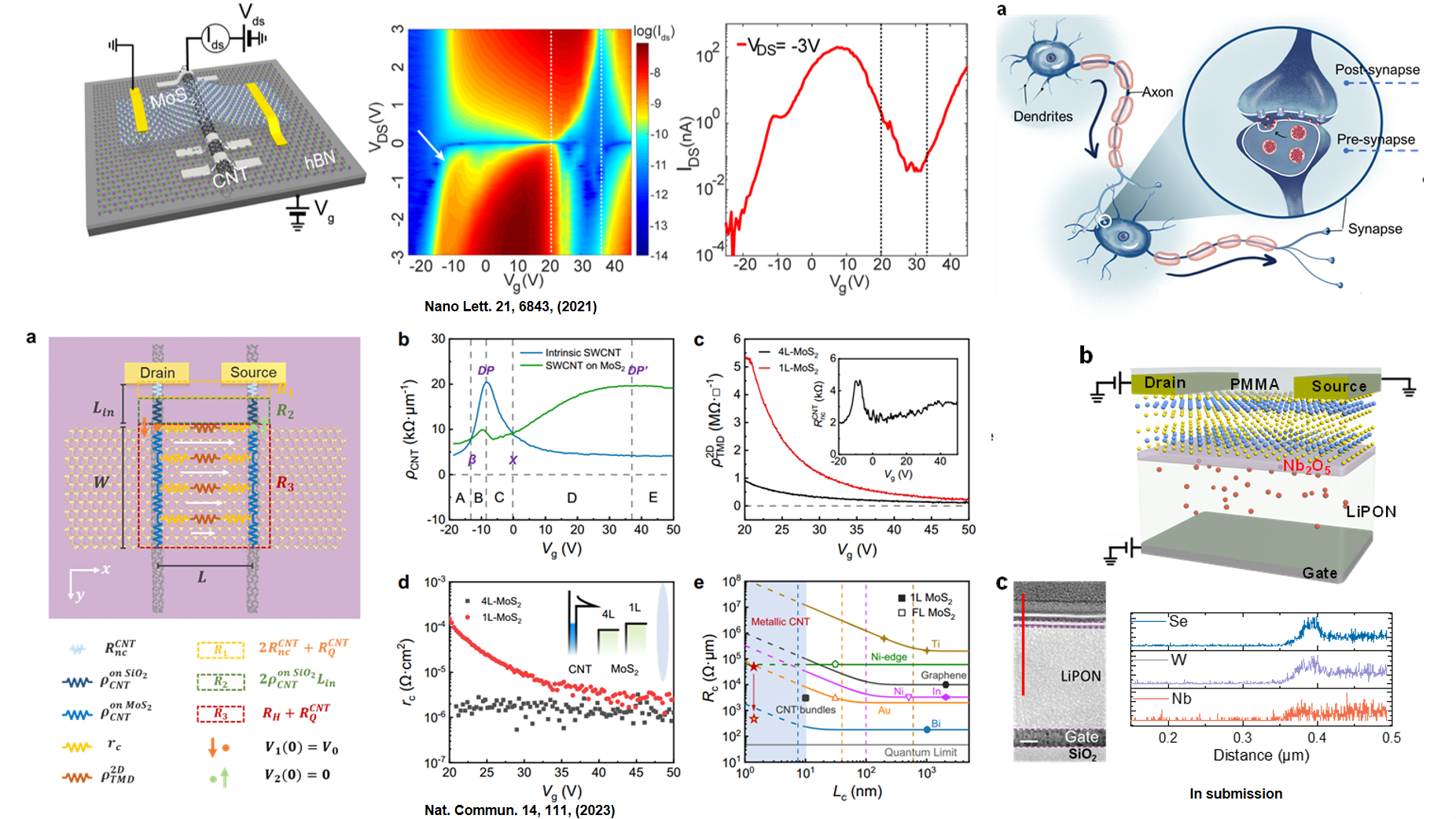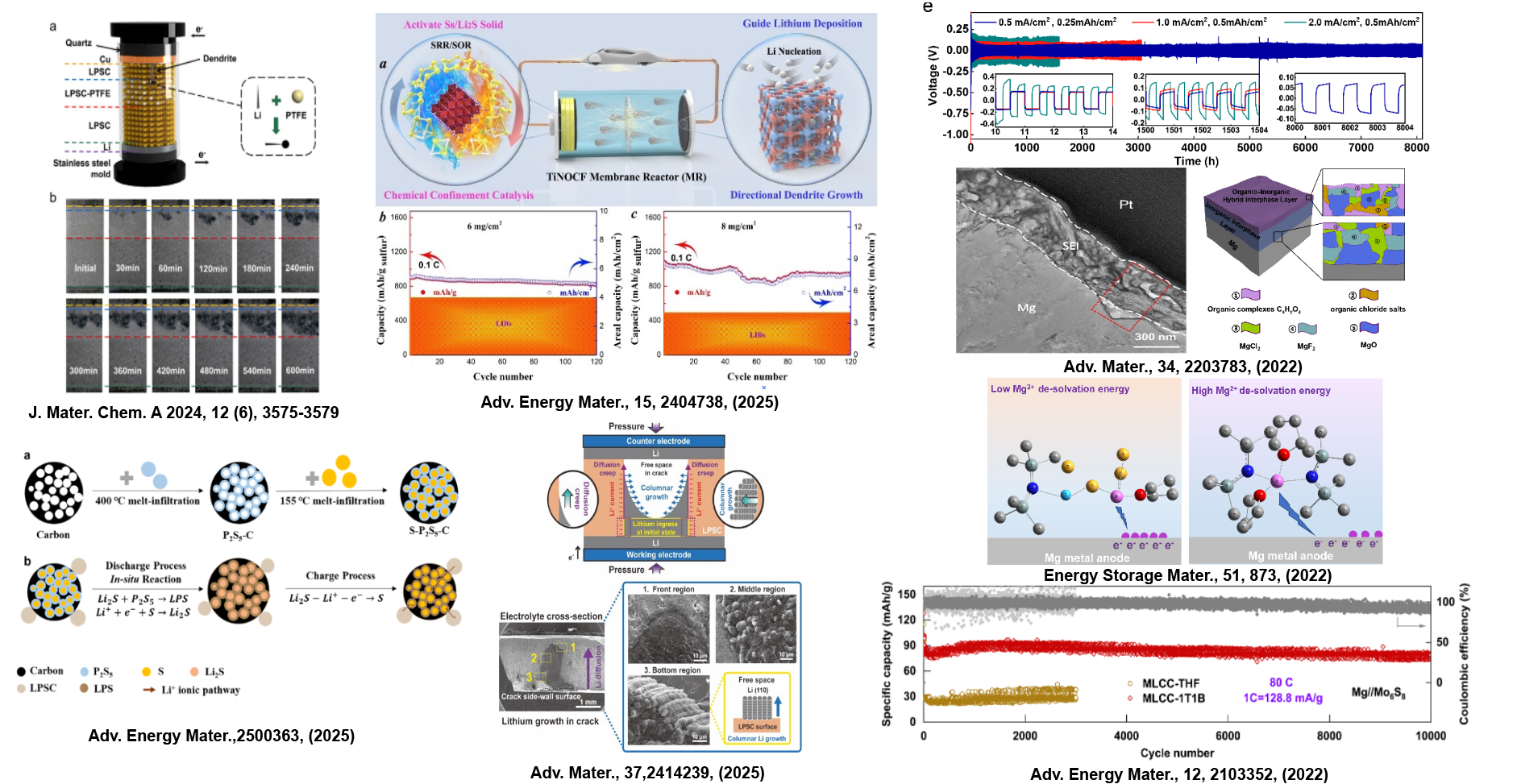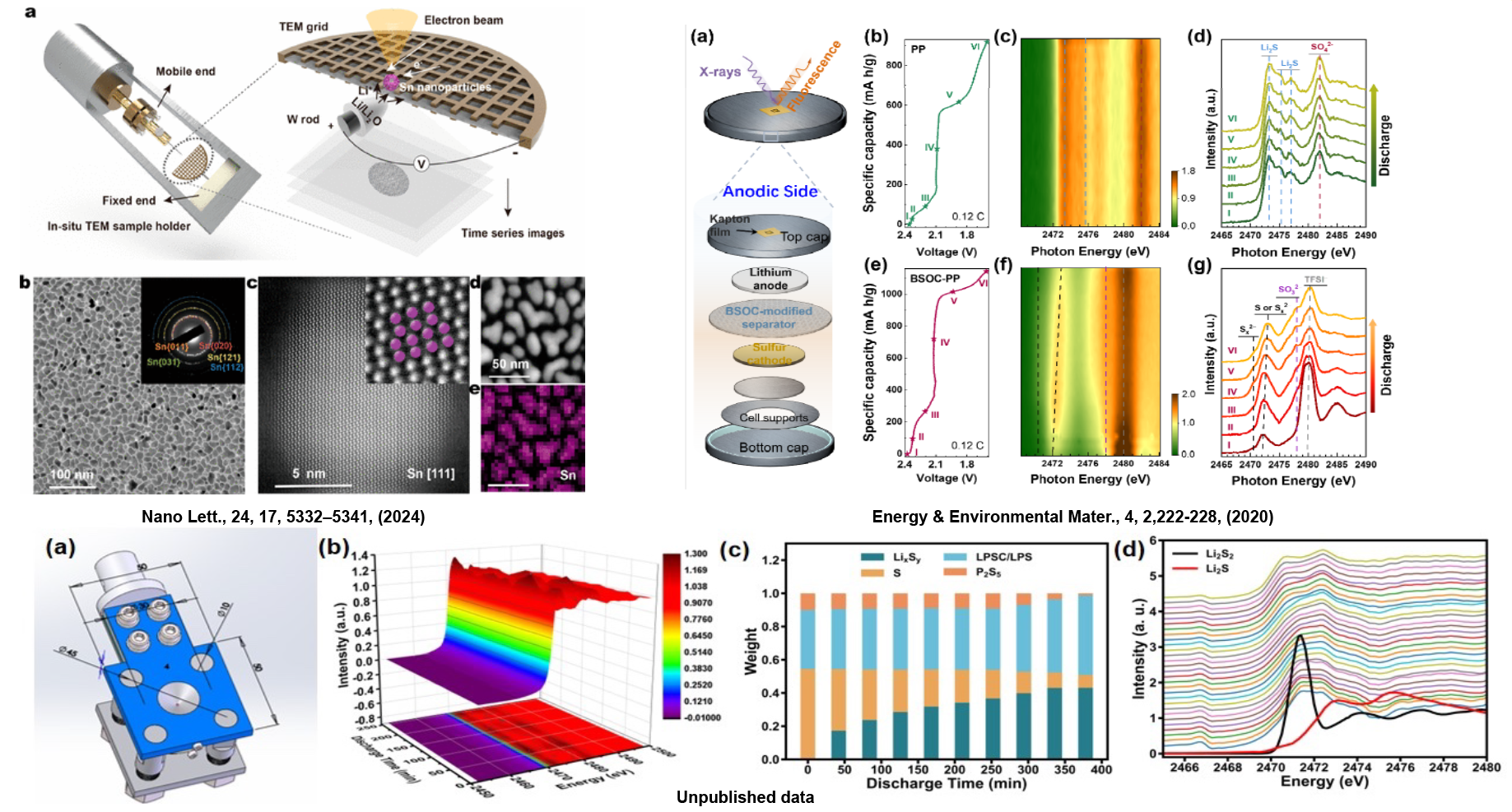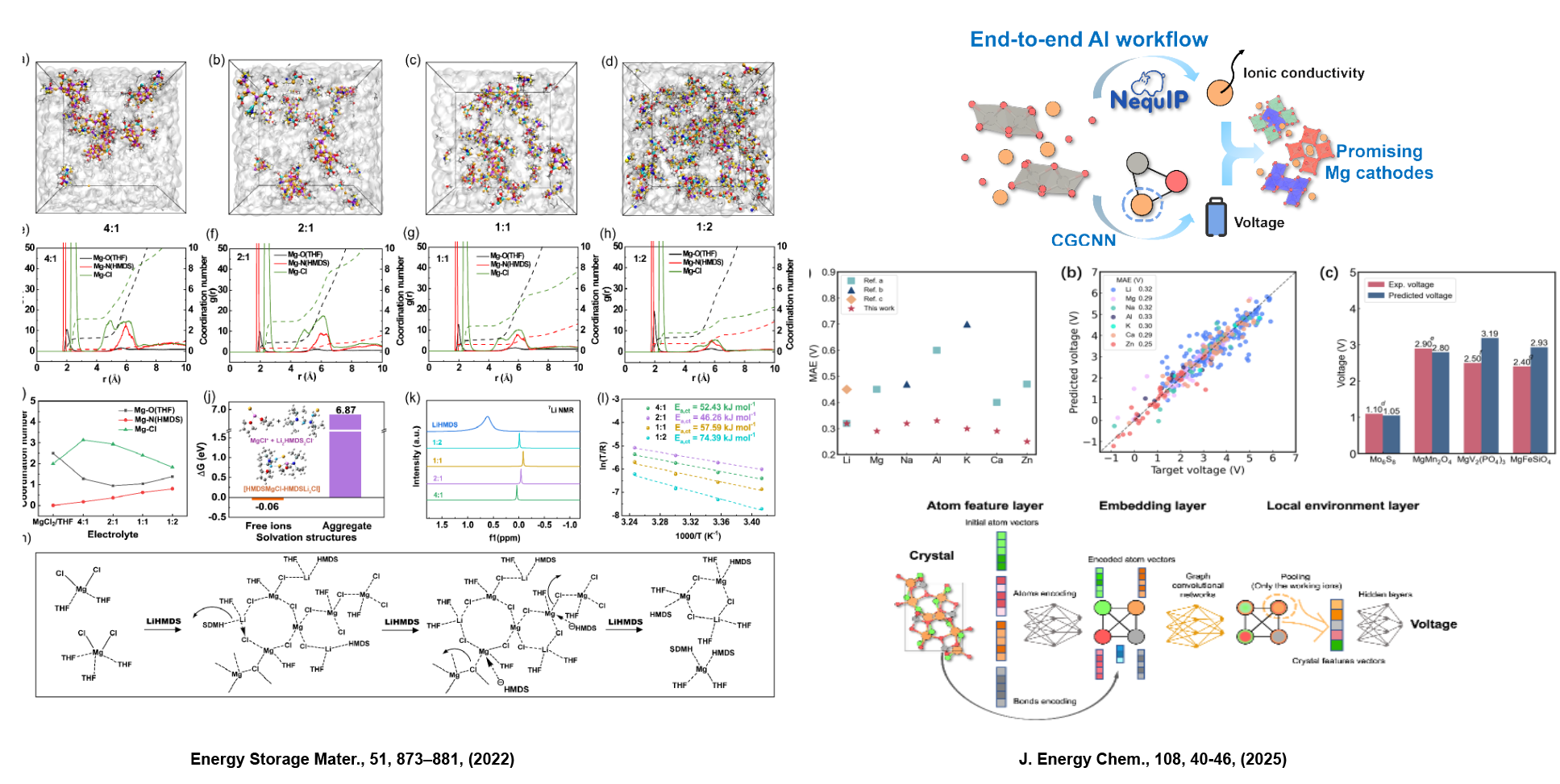Electronic/Ionic Neuromorphic Devices

1.Low-Dimensional Electronic Devices
As the semiconductor industry enters the post-Moore’s Law era, further reducing the size of silicon-based transistors has encountered challenges that are difficult to overcome, such as short-channel effects and decreased mobility. Low-dimensional devices based on carbon nanotubes, two-dimensional materials, and their heterostructures can be feasible solutions for continuing the development of integrated circuit industry following the approaches of “Deep Moore” and “Beyond Moore”.
2.Semiconductor DRAM Devices
Semiconductor DRAM memory has a huge market demand and occupies an important position in the semiconductor manufacturing field. Our research group is exploring novel DRAM technology involing DRAM array transistors based on new channel materials (polycrystalline silicon, oxide semiconductors, and two-dimensional materials), new capacitor materials, vertical DRAM architecture, and their processing technologies.
3.Ionic Neuromorphic Devices
Different from a traditional electronic computer of von Neumann architecture, the human brain processes information in a way of “computing in memory”, which has ultra-low energy consumption. Ion transport regulation plays an important role in achieving efficient information processing and signal transmission in the human nervous system. Our research group combines solid-state electrolyte materials and nanodevice processing technology to develop novel ionic devices (such as ionic memristors, synaptic transistors) with efficient and low-power neuromorphic functions, and explore their applications in future artificial intelligence deployments.
Novel Batteries and Energy Storage Materials

1.Lithium/Sulfur Batteries
Energy storage technology is crucial for the effective utilization of renewable energy. Li/S batteries, with their high theoretical specific capacity (1675 mA h/g) and cost advantages, have the potential to replace lithium-ion batteries as the next generation of efficient energy storage devices. By addressing the technical bottlenecks, such as designing nanostructured carbon-sulfur composite materials, our research group has significantly improved the performance of Li/S batteries. Notably, using graphene oxide-sulfur composite electrodes, we have achieved an impressive cycle life of 1500 cycles, a record for this type of battery.
2.All-Solid-State Batteries
All-solid-state batteries use solid-state electrolytes instead of liquid electrolytes to pair with high capacity lithium metal or silicon-carbon negative electrodes to achieve high energy density, long cycle life, safety and stability. Our research group has conducted in-depth research to address two critical issues in solid-state batteries: (1) interface stability between metal lithium negative electrode and inorganic solid electrolyte, especially the lithium dendrite inhibition strategy; (2) development of all-solid-state lithium/sulfur battery with high energy density and long cycle life.
- All-Solid-State Li/S Batteries
The all-solid-state Li/S battery is expected to solve the problem of polysulfides shuttle that is the pain-point in liquid Li/S systems. Our research group has investigated the working and failure mechanisms of Li/S batteries using polymer-based or sulfide-based solid electrolytes. High-performance all-solid-state Li/S battery has been achieved by in-situ formation of solid ionic pathways in composite sulfur electrodes.
- Thin Film Batteries
Thin film batteries, known for their high safety, chemical stability, long cycle life, and stable electrochemical performance, can be directly integrated with microelectronic devices and have found wide applications in areas such as smart packaging, smart cards, wearable devices, and implantable medical devices. To address challenges such as low single-cell capacity and low room temperature ionic conductivity of thin film electrolytes, we adopt strategies such as composite electrolytes, composite electrodes and thick electrodes to realize high-energy-density thin-film batteries.
- High-Entropy Silicon Anode
Silicon, with their theoretical capacity nearly ten times that of graphite (approximately 4200 mAh/g), has the potential to become the next generation anode material for lithium-ion batteries. However, the significant volume expansion of 300% hinders its practical application. To address this problem, we designed high-entropy alloy anodes, and performed in-situ chracterization on their reaction mechanism and structural changes during electrochemical cycling.
3.Rechargeable Magnesium Metal Batteries
Magnesium metal anodes, owing to their high volumetric capacity, abundant crustal resources, and high safety, have gained increasing attention from researchers. To address the problems, such as the lack of high-performance electrolytes, severe passivation of magnesium anodes, and unclear battery reaction mechanisms, we have designed a series of magnesium ion electrolytes, and studied their solvation structure and the formation mechanism of solid-electrolyte interphase (SEI). The relevant results have been published in international journals such as Adv. Mater., Adv. Energy Mater., Angew. Chem. Int. Ed., Nano Lett., Adv. Funct. Mater., Energy Storage Mater., Energy Environ. Mater.
In-situ Characterization of Electrochemical Interfaces

In-situ characterization techniques are effective means to study the electrochemical reaction mechanisms and capacity degradation mechanisms of batteries. Our research group has developed a series of in-situ electrochemical setups suitable for characterization techniques such as synchrotron X-ray absorption spectroscopy (XAS), electron microscopy, and Raman spectroscopy. These methods enable real-time monitoring of electrochemical processes and interface structure evolutions in batteries, which provides valuable insights for further optimizing battery design.
AI-driven Computational Materials Design

Using first-principles calculation methods such as density function theory (DFT), molecular dynamics (MD), ab initio molecular dynamics (AIMD), and deep learning models such as crystal graph neural networks (CGCNN), deep learning potential (DEEPMD), E3-equivariant network for interatomic potentials (NequIP), and graph neural network for materials exploration (GNoME), high-throughput performance predictions of battery materials are conducted to accelerate the exploration and discovery of novel electrode and electrolyte materials.
 简体中文
简体中文 English
English